The editor invites a reader along for a side-by-side review of the Webley Eclipse 12
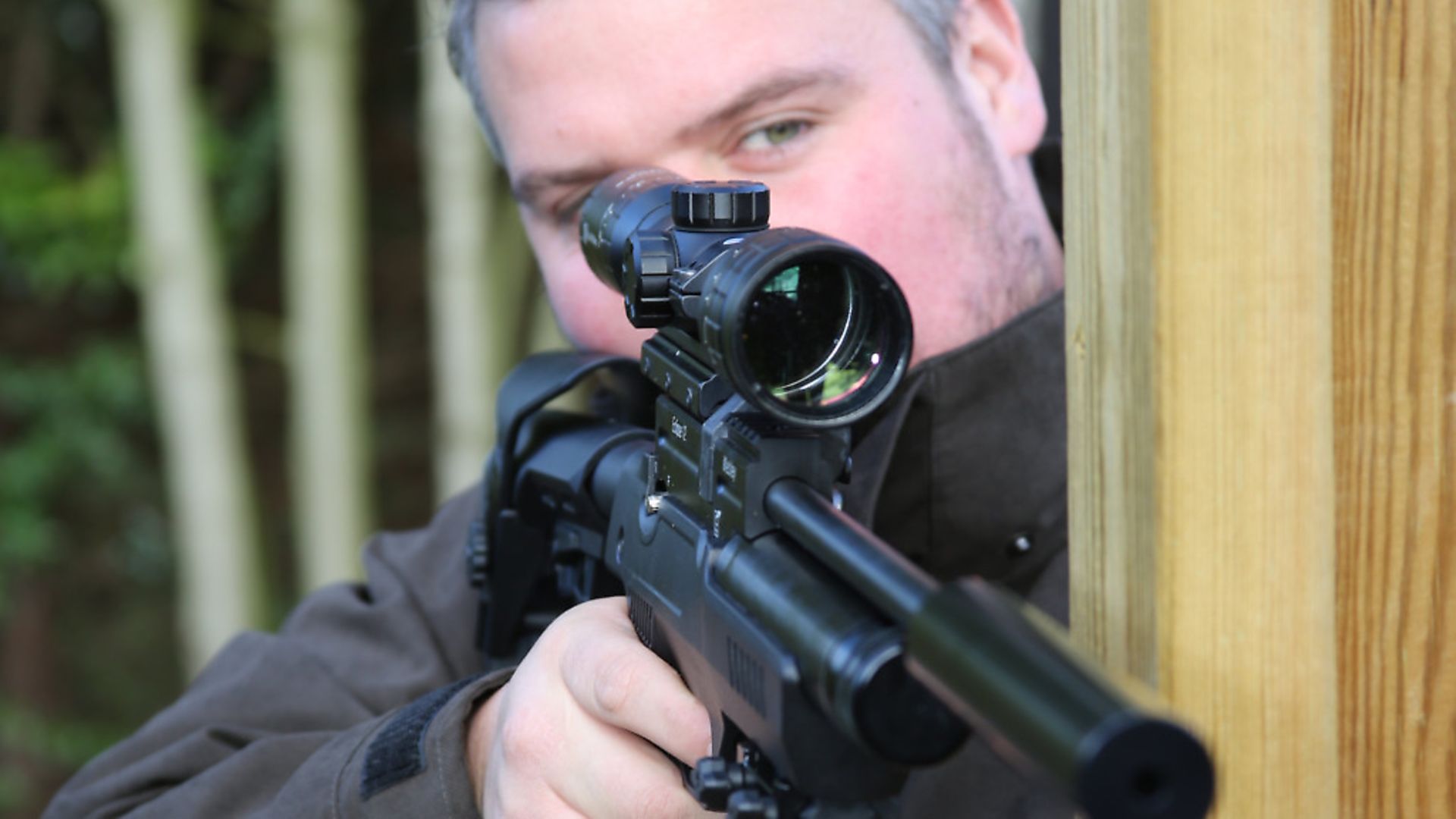 credit: Archant
credit: Archant
Gary is an experienced airgun shooter and he often contacts me with points about things that matter to him. He’s always polite, he thinks about what he says, and he seeks information more often than he strives to put his own point across. Time after time, he has left our conversations with a, ‘yes, I see now. That makes sense when you explain it like that.’ However, when Gary’s considered opinion differs from mine, even after I’ve given him my point of view, he’ll stand his ground and we’ll respectfully agree to disagree. Now and again, Gary will call me and tell me his opinion has changed and he can now see what I was getting at, and sometimes I’ll do the same to him. All in all, Gary is the perfect candidate to take part in something I’ve been wanting to do for some time, now.
Survey suggestion
You’ll have noticed the one-page readership surveys we’ve been running, and as we’ve said all along, every response is considered. Several of you suggested it would be interesting if an Airgun World reader gave their opinion alongside mine, during the Editor’s Test feature, and this month, with Gary’s help, we’ll be giving that a try.
To get things moving, I arranged for Gary to use this month’s test subject, the new Webley Eclipse 12, for the best part of a month, after which I’d visit him, take some photos, then grab the Eclipse for a couple of weeks. When I’d finished my tests, I’d phone Gary and compare opinions. Easy!
Well, as ever, it wasn’t quite as straightforward as I’d have preferred, but I think the exercise was a valid one and it’s something I believe is worth repeating. I hope you think so too. Here’s how it all panned out.
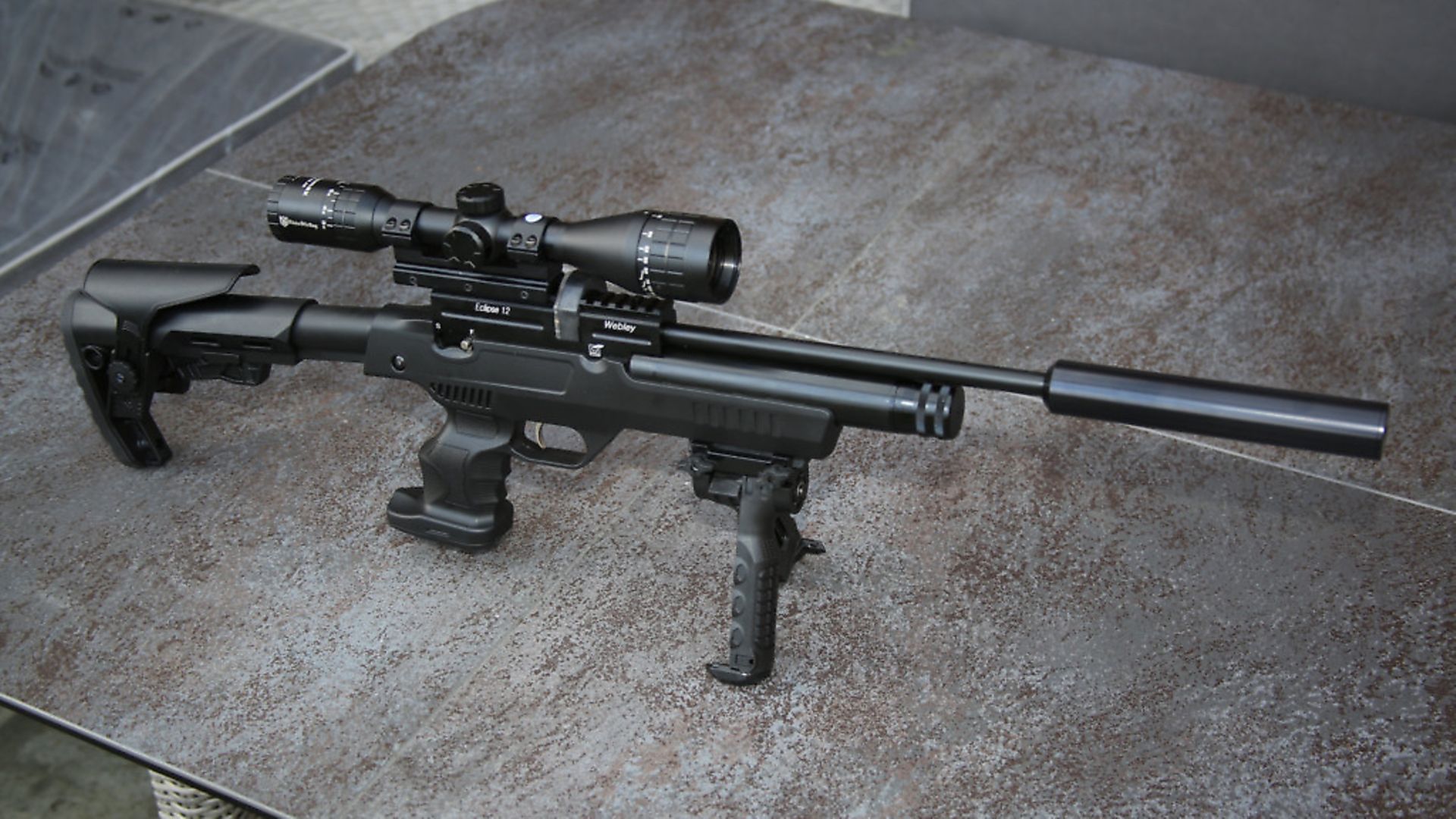 credit: Archant
credit: Archant
Our first impressions
The test rifle is the full-power incarnation of the ultra-carbine Eclipse released a couple of months ago. Like its equally compact, sub-6 ft.lbs. stablemate, this .177 Eclipse 12 is built around the pre-charged, 14-shot (12 in .22), sidelever format, with the lever on the left-hand side of the action and it features the instantly-adjustable, ‘minimalist’, synthetic, ambidextrous stock, in any colour you like, as long as it’s black. Webley also sent us a prototype bipod/grip attachment for assessment, and that will be included in this test.
You’ll find a Picatinny scope rail, plus an accessory rail of the same format under the rifle’s fore end. On the subject of the test rifle’s scope rail, I was interested to see that Gary had used a one-piece scope mount, rather than the two-piece example I’d supplied. I was even more ‘interested’ to see that this mount was overhanging the rail by around a quarter of the mount’s length. I mentioned this to Gary, as you’d imagine, and he told me, ‘I prefer one-piece mounts, and it’s as solid as a rock as it is.’ Fair enough.
Gary: This is my sort of rifle. Thanks to that adjustable stock, I can make it fit me perfectly, and if I want to give any youngster a bit of coaching, I can have it fitting them inside a minute, and it won’t matter if they’re southpaws, either, because this rifle is ambidextrous.
That drop-down grip has had some thought put into it, too, and I even like that prototype front-mounted grip/bipod attachment, although it’s a shame it doesn’t slip on and off a bit more easily. I used it as a bipod when I zeroed the rifle and it’s just the job on my back garden table. When it’s folded into a grip, I found myself using it more and more. I think this attachment could be really useful and I left it fitted in the end. Yes, my first impressions are pretty good. The Eclipse is well made and finished, and it’s easy to operate once you teach yourself how to run the magazines, and you remember to keep a track on the pellets you’ve fired.
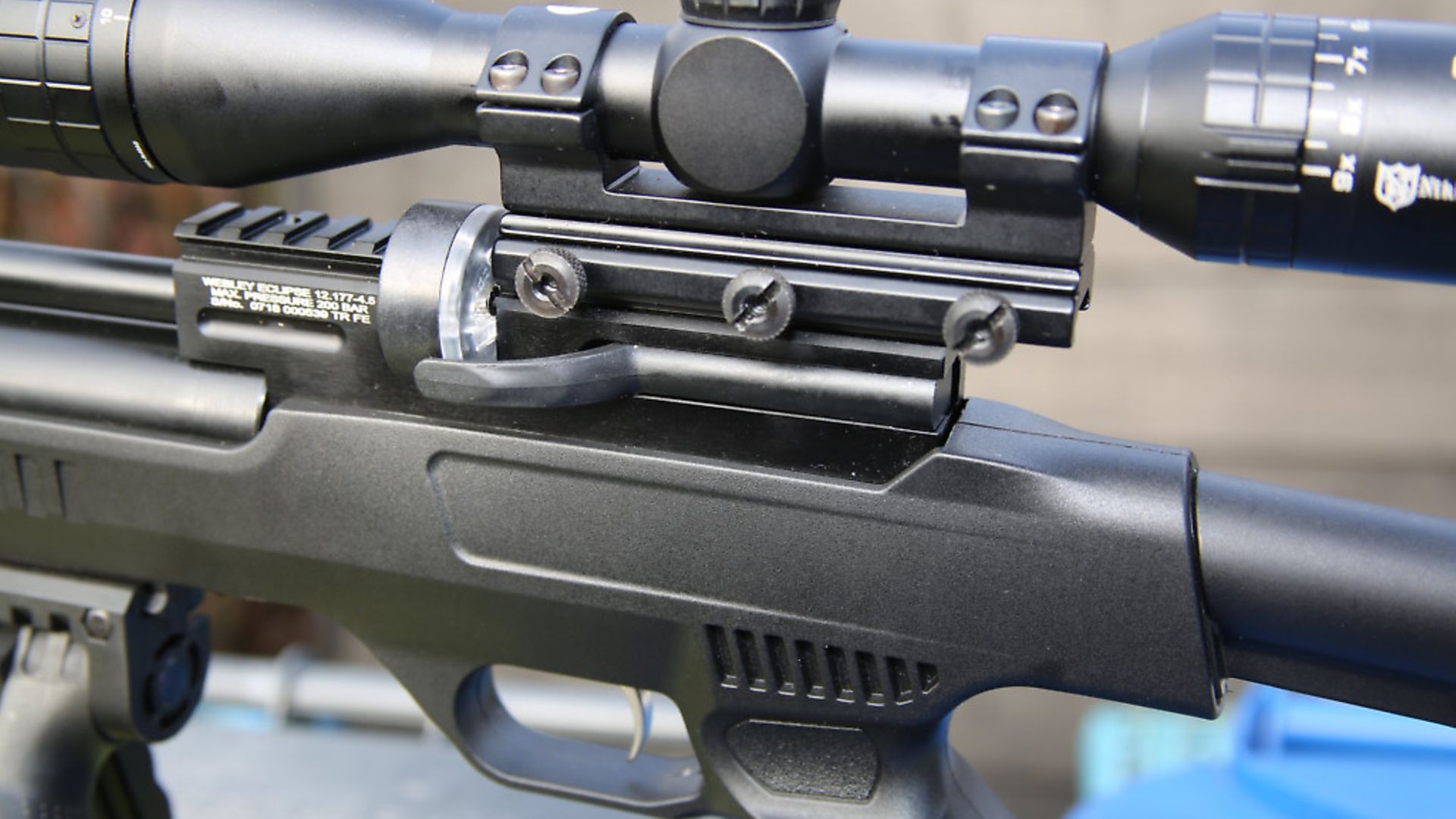 credit: Archant
credit: Archant
Capacity
Terry Doe: I’ll now address Gary’s last point about keeping track of your pellets. The stumpy, 105cc air reservoir fitted to the full-power Eclipse is charged to 200 bar, from which it produces 20 ‘perfect’ shots in .177 and 24 in .22. I can already hear some hunters dismissing this rifle because of that low shot count, but before you do that, think on. One of the most popular and best-selling rifles of the modern pre-charged age, was the original Falcon Lighthunter.
Rarely a month goes by without someone contacting me and asking if I know where one could be found, or if it’s likely to make a comeback. That rifle in its original, pistol-based form did about as many useable shots as this Eclipse 12, but it had quite a following and I used a prototype as the ultimate ‘walkabout’ rifle to hunt rabbits.
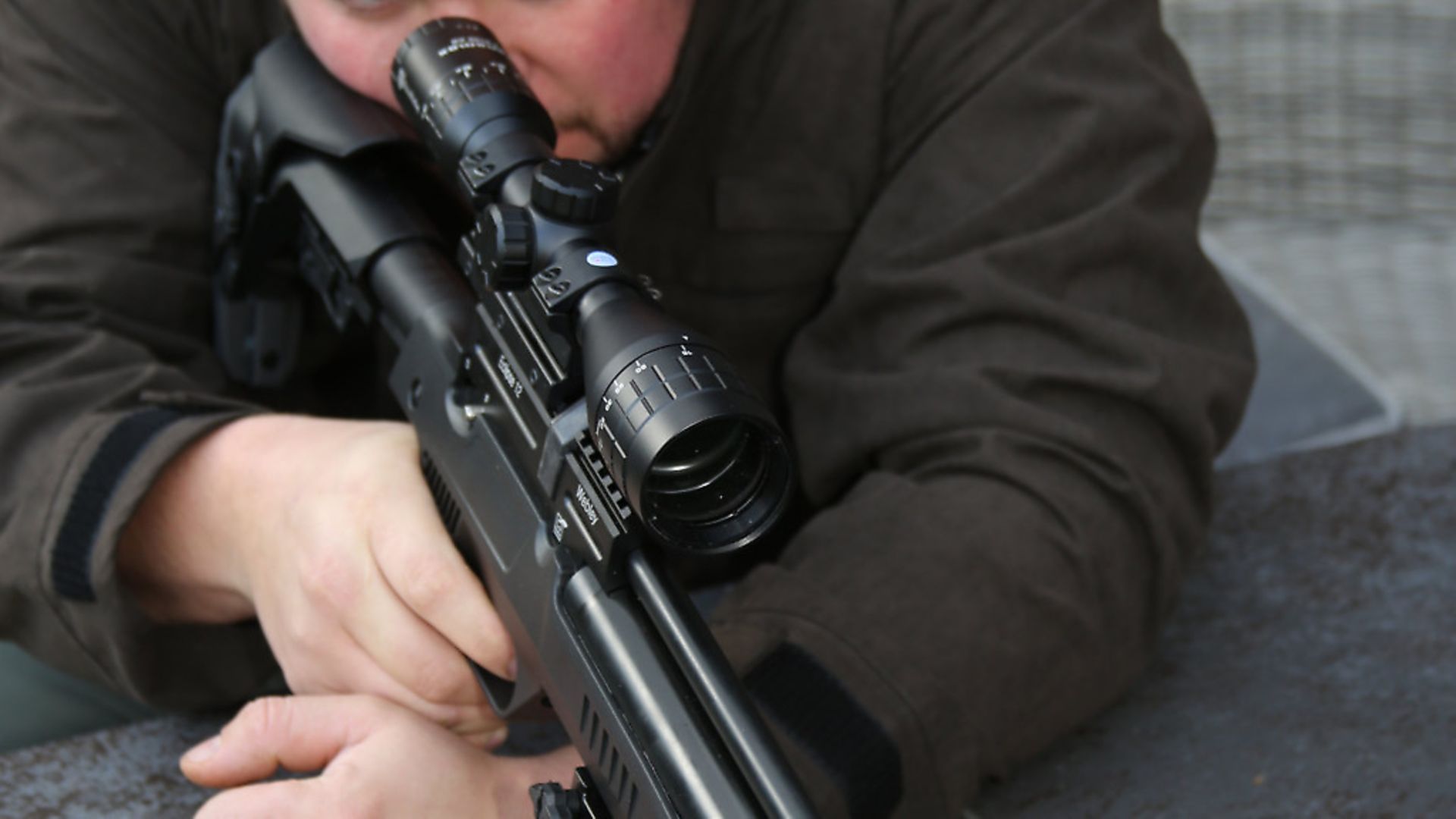 credit: Archant
credit: Archant
Specialist rifle
Meanwhile, back at the Webley Eclipse 12, I forsee the same sort of application, only even more effective, due to the Webley’s multi-shot magazines, two of which are supplied with each rifle. Add the optional silencer to the fully-floating barrel of the Eclipse, courtesy of its ½-inch UNF threading, and you’ve got yourself a seriously handy ratter, feral pigeon clearance tool, or something that’s ideal for shooting from the cab of a 4 x 4. Let’s see what Gary thinks about the use to which this rifle is suited.
Gary: Let’s get something clear, here. I can’t remember the last time I shot 10 rabbits, let alone 20. My sort of hunting usually involves a walk around my two permissions, and the farmyards attached to them. I can keep an air bottle in my truck, anyway, so when I need to, I could just come back for a top-up. I’ve used
This Eclipse for a few weeks now, and remember it’s a .177, not a .22, and I’ve never run out of air. On two occasions, the gauge told me the rifle would be needing a top-up soon, but even then it was still ready to go by the time I got back to the vehicle.
Far more important, for my shooting at least, is the fact that I can carry this rifle anywhere, use it in confined spaces, and as I said before, I can make it fit me. The shot count thing is no big deal for me at all.
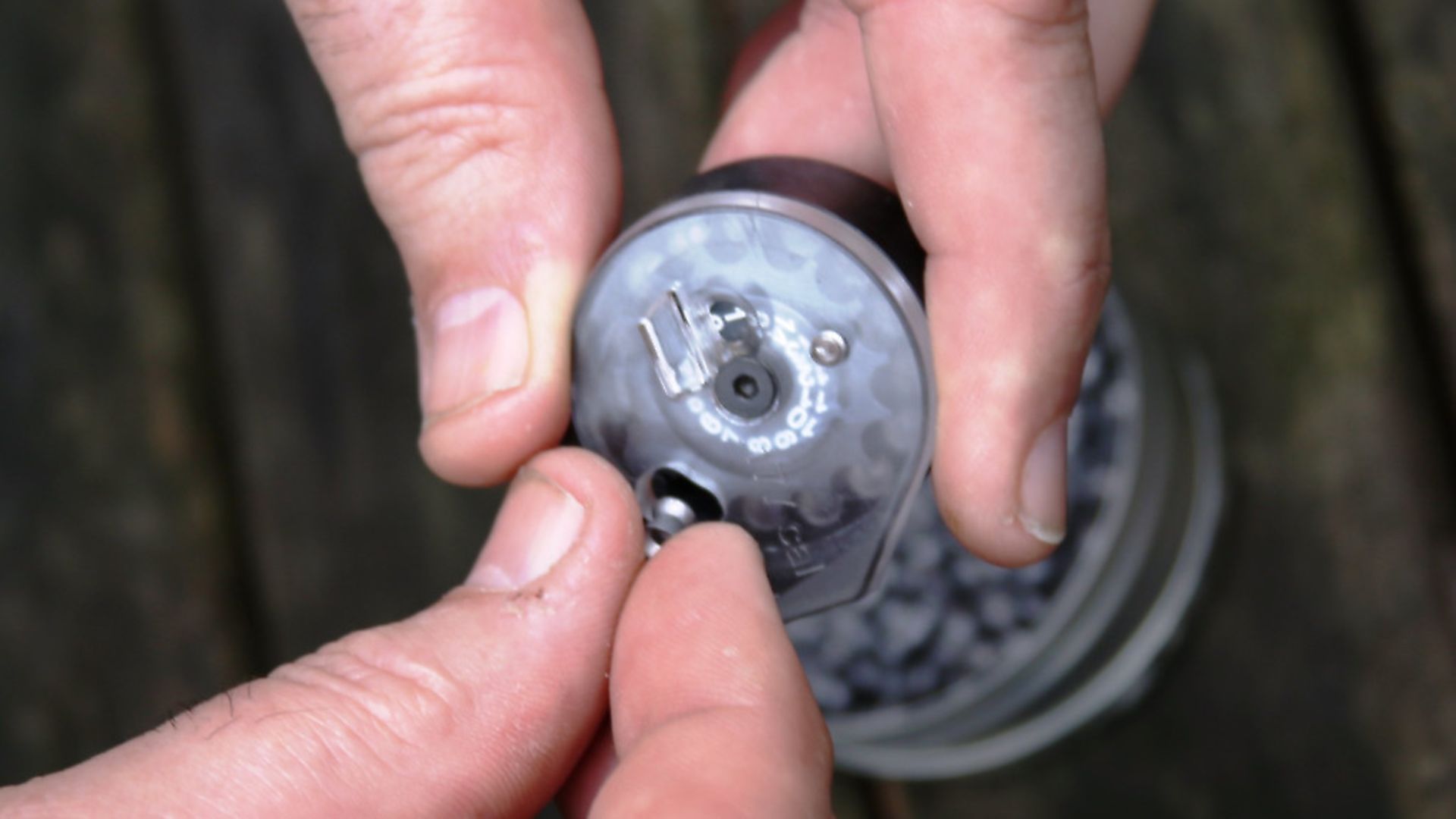 credit: Archant
credit: Archant
Range performance
TD: Over the chrono’, the .177 test rifle’s ‘best’ 20 shots averaged 11.6 ft.lbs., and showed an overall variation of 18 f.p.s., using Air Arms Diabolo Field straight from the tin. Gary showed me a selection of target cards, all shot at 30 yards from his garden table, and his latest five targets showed groups from 16 to 18mm diameter. Back at Bisley, on my fenced-off range, I managed to pinch those groups in a little, and confirm that the Eclipse 12 has genuine hunting performance out to 35 yards, weather permitting, as always.
Practical assessment
Gary and I now need to give you our views on how easy, or otherwise, the Webley Eclipse 12 is to shoot, run and maintain. I’ll let Gary go first, after which I’ll sum up.
Gary: First things first, charging this rifle with air is about as simple as it gets. There’s a probe charger supplied which just plugs in under the reservoir and self-seals on its ‘O’ rings. Talking of ‘O’ rings, there’s a set supplied with the rifle, which is a nice touch.
I’m going to admit something embarrassing, here; when I first tried to charge the Eclipse, I thought someone had built it wrongly and there wasn’t enough room for the probe to go in. That’s because I was looking at the charging port from the top of the rifle, so don’t make that mistake! Still on charging, this rifle is perfect for anyone who uses a pump rather than a diver’s tank. I pumped up the test rifle in well under five minutes and it didn’t ruin me, either.
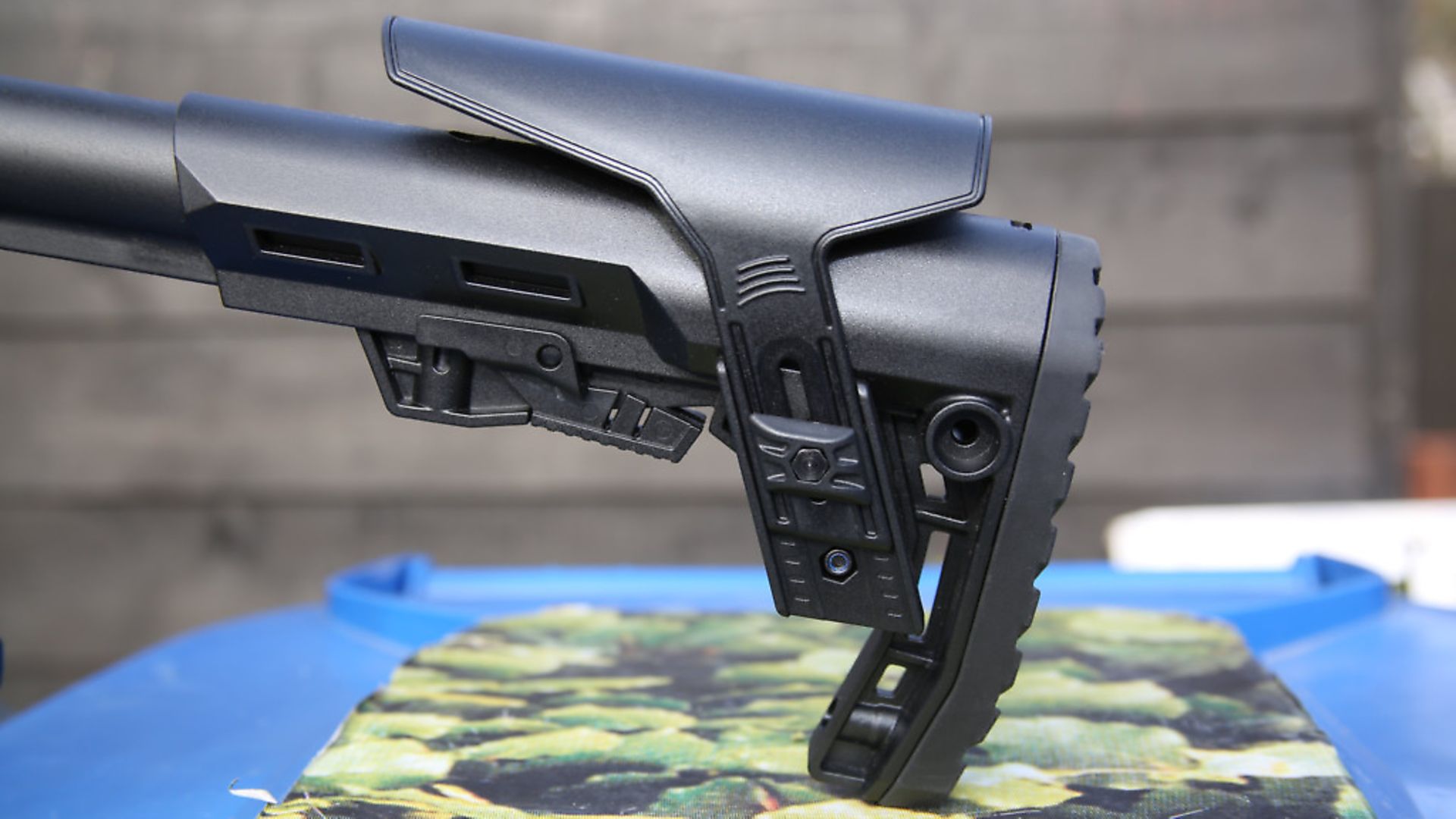 credit: Archant
credit: Archant
Magazine
Loading the magazine is easy, too, and all the more so because there’s none of this ‘first pellet in backwards’ deal to do. Just wind up the mag’s clear cover to tension the spring, then drop in each pellet until the magazine is loaded. Oh, and remember it slides in ‘backwards’, rounded end first, from the right-hand side of the action. There are grooves to guide the mag’ home and it won’t let you load it the wrong way, so as I said, it’s as easy as can be.
Mounting gripe
On the downside, the more I use that prototype front grip/bipod attachment, the more I wish it was easier to fit. That’s the thing with Picatinny mounts, isn’t it? They don’t slide-fit because of the cross-bolts, and while I can see the need for cross-bolts to deal with recoil on a scope mounting rail – not in this case, obviously, but generally – there’s no need for them on an accessory rail. It’s just a small point but some sort of quick clamping mount would be brilliant on that fore stock rail.
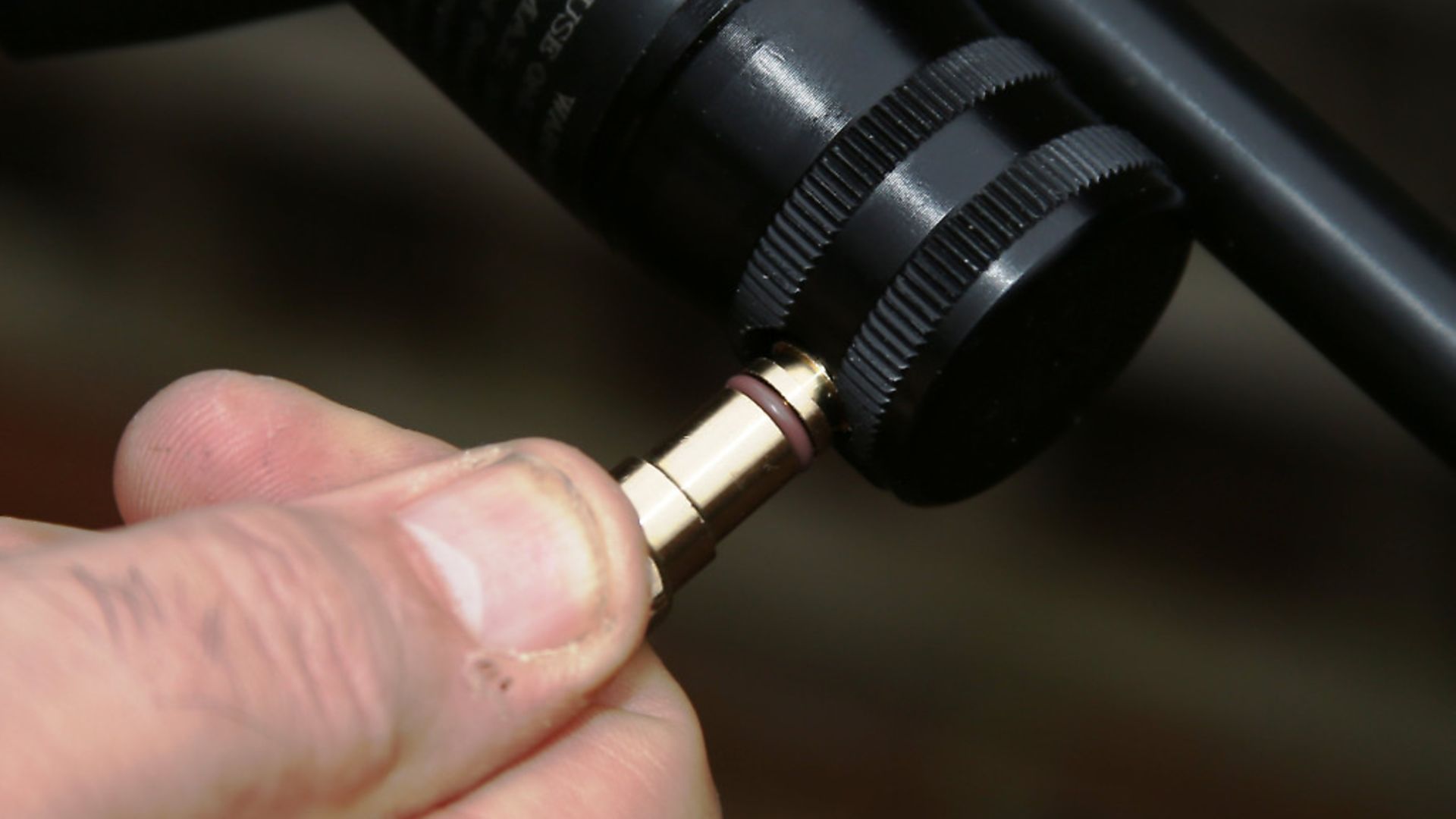 credit: Archant
credit: Archant
Gary’s verdict
All in all, the Webley Eclipse 12 is the sort of rifle I’d buy, especially at £450. I’d probably buy a pump for it, too, unless I had other PCPs to charge, and I’d definitely add that silencer option. This rifle makes quite a racket without one, and I don’t need that at all. Finally, Terry has now convinced me to change that one-piece mount for a two-piece. It’s just a looks thing and it didn’t bother me until he kept hassling me over it. I’ll know next time I help him test a rifle – if he ever lets me, that is!
My verdict
TD: I’d agree with pretty much everything Gary has said, especially changing that mount, but I was surprised he didn’t mention the Webley’s sidelever being on the left, and not a word about the trigger. As always, I showed the test rifle to some of my fellow shooters and I was amazed that only the left-handers remarked on the lever being mounted for southpaw use.
I’d left the trigger as received from the Webley agents, Highland Outdoors, and it was a little on the firm side, but it suited me and it obviously suited Gary. Trigger adjustment is a ‘stock off’ procedure and the process is covered within the rifle’s instruction booklet. I had a tweak about with the test rifle’s trigger and I think I improved it a little, but these things are personal, and with the winter weather now here, I’ll avoid any ultra-light trigger settings that frozen fingers could mess up.
Like Gary, I fully appreciate the Webley’s adjustable stock, plus it’s not cold on the face and hands, and those adjustments literally do take seconds. I also like the position of the on-board pressure gauge, just forward of the moulded trigger guard, which lets me check air reserves by simply half-rotating the rifle.
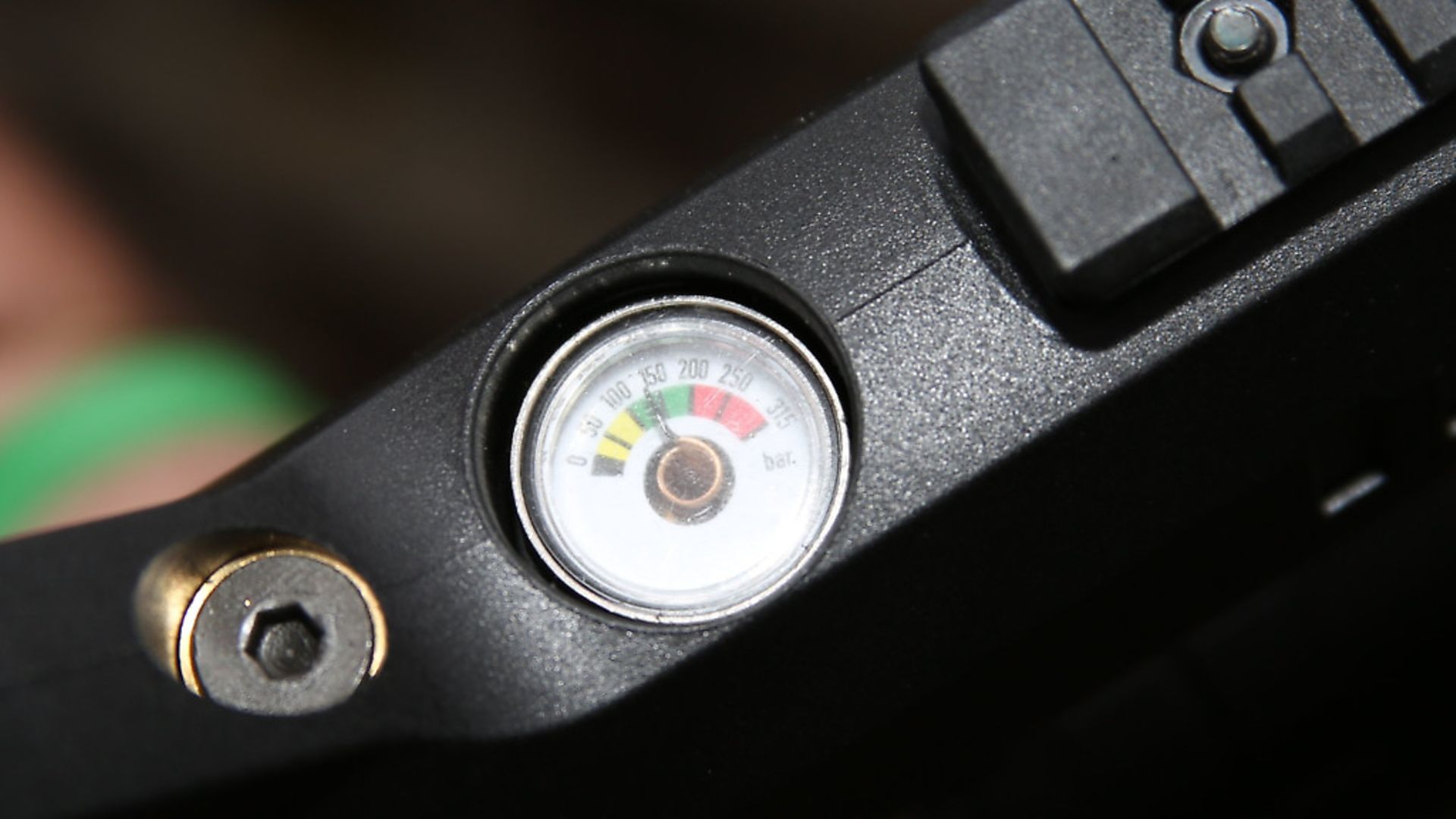 credit: Archant
credit: Archant
Final thoughts
This Webley Eclipse 12 is definitely worth its reasonable £449.99 asking price, and its versatility makes it suitable for a wide variety of shooters. You’ll need to add the price of a silencer to its price, and you’ll have one extremely handy rifle. I’ll use it for another month and report back in the February issue, so we’ll see if the shots-per-charge output is an issue in the real world, although I strongly suspect it won’t be. For now, I’m enjoying this go-anywhere, one size fits all sporter, and if you’re looking for an affordable bit of specialist kit – you’ll need to check out the Webley Eclipse 12. See you next time!
*Webley have now confirmed that all Eclipse 12 rifles will be supplied with the bipod/grip shown in this test. The RRP remains at £449.99
Specification:
Model: Eclipse 12
Manufacturer: Webley
Country of origin: UK/Turkey
Type: Pre-charged, multi-shot, sporter
Calibre: .22, .177
Cocking/loading: Sidelever and supplied single-shot tray
Loading: Via removable, rotary 12 (.22) or 14-shot (.177) magazine
Trigger: 2-stage, adjustable
Stock type: Ambidextrous black synthetic, adjustable for pull-length and comb height
Weight: 2.55kg (5.5lbs) rifle only
Length: 660mm (26ins) to 736 (29ins)
Fill pressure: Max 200 bar
Shots per charge: 24 in .22, 20 in .177
Variation over charge: 18fps for .177 on test
Average energy: 11.6ft.lbs.
Contact: webleyandscott.com
Tel: 01785 859122
RRP: £449.99
__________________________________________________
See more gun tests...
Webley Eclipse
Webley En4cer 12
Webley Mastiff